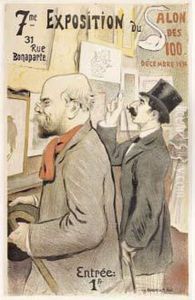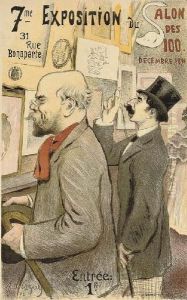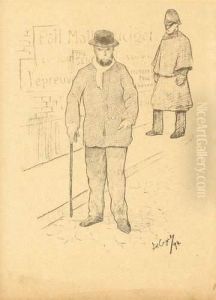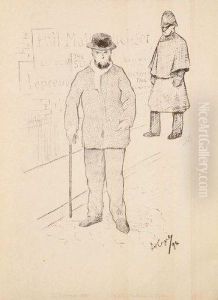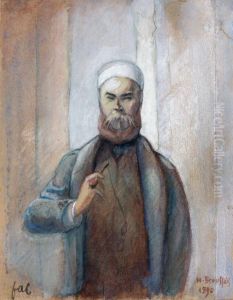Frederic Auguste Cazals Paintings
Frédéric-Auguste Cazals was a multifaceted French artist, known primarily for his work as an illustrator, but also distinguished as a painter, writer, and poet. Born on May 29, 1865, in Sète, a picturesque coastal town in southern France, Cazals grew up in an environment that was rich in cultural and artistic heritage, which undoubtedly influenced his future career in the arts. His early life was marked by a move to Paris, where he immersed himself in the city's vibrant artistic community, becoming an integral part of the Symbolist movement, which sought to express the mystical and emotional aspects of human experience through art.
Cazals is perhaps best remembered for his close association with the poet Paul Verlaine, one of the leading figures of French Symbolism. Their friendship played a significant role in the artistic development of both men, with Cazals providing illustrations for several of Verlaine's works. His illustrations often captured the essence of Verlaine's poetry, translating its complex emotions and ethereal qualities into visual form. This collaboration is a testament to the synergy between literature and visual arts during the Symbolist era and highlights Cazals' ability to navigate and contribute to multiple artistic mediums.
Apart from his work with Verlaine, Cazals was a prolific artist in his own right, producing a vast array of drawings, etchings, and watercolors. His art is characterized by its delicate lines, attention to detail, and a preference for themes that explore the nuances of human emotion, spirituality, and the natural world. Cazals' contributions to the art world were not limited to his visual artistry; he was also a respected writer and poet, engaging with the literary circles of his time and publishing works that reflected his Symbolist affiliations.
Cazals' influence extended beyond his immediate circle, impacting the development of Symbolism and modern art in France and beyond. Despite facing challenges, including health issues and the changing tides of artistic trends, Cazals remained dedicated to his artistic vision until his death on March 3, 1941, in Paris. Today, his work is celebrated for its contribution to the Symbolist movement and its enduring aesthetic and emotional depth, which continues to captivate and inspire both scholars and art lovers around the world.
